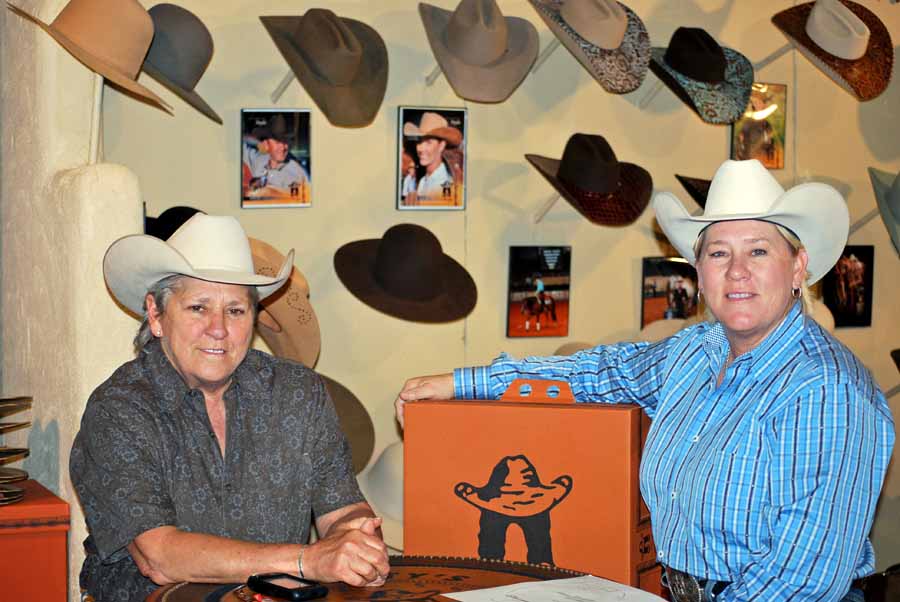Lyle Lovett probably said it best: “You can have my girl, but don’t
touch my hat.”
There aren’t a lot of things men take too seriously about fashion,
but their hats are definitely one of them. You can tell a lot about
someone by his hat. No hat is shaped exactly the same, but there are a
few basic starting points depending on what corner of the show
barn you’re in.
Western retailer Sean Ryon of Fort Worth, Texas, laid out some basic
ground work for hat shapes and care. Find one that best fits your
interest, and then crease it to your own personal style.
Hat Shapes
There are two basic principles to start with hat shapes. The event
you compete in is first, and the shape of your face is second.
There are certain basic standards judges look for in particular
classes. For example in halter, western pleasure and showmanship classes, judges are
looking for a crisper look. The front of the brim should be extremely
straight and shouldn’t have a dip in the front. The crown will be fairly
narrow, and the vents on the sides are pulled out a little longer.
Cutting and reining have a little more leeway.
Cutters usually have a lower crown, and the brim is laid out a little
flatter. Generally, the reiner will fall somewhere between the cutter
and the show crease. There’s no definite trend in the ranch horse versatility classes,
but the general shape is probably closest to the reiner. It’s just a
little softer in the front, and the sides are up a little higher.
The basic rule of thumb when it comes to the shape of a hat paired
with the shape of your face is as follows:
- Narrow face – The hat should have a narrower crown and have the
edges tipped up a little more than average. - Round face – The front should sit a little lower and the sides not
quite as high.
Storage and Care
Felt
The best thing you can do for your felt hat in the summertime is let
it dry out. Never store it in a plastic bag, because it will hold
moisture and lose shape.
Hat cans are great for keeping the dust off your hat in the stall,
but after the show, take the hat back to the hotel and let it sit open
and dry out. Keep your hat out of the sun, but leave it sitting a place
where it can dry out. Always make sure your felt is completely dry
before brushing it, or the brushing will actually rub the dirt in
instead of off the hat. You can use either a soft-bristle brush or a
felt hat-cleaning sponge. Don’t store your felt in the hot horse trailer. Remember to bring
it into the house when you get home from the show. Figure on getting
your hat professional creased about twice a year to maintain its shape.
Straw
Straw hats aren’t built to last forever, but with proper care, you
can make them last a lot longer. You can clean off dust with Windex or a
fairly mild cleaner on a rag.
Sweat stains are difficult to get out. Help prevent the sweat from
soaking through the sweat leather by lining the inside of the band with a
piece of Saran Wrap. This also works for light-colored felt hats.
Halter Hat Trends
Halter
hats are moving up. Well, the sides of their brims are.
Ryon says he has noticed people asking for their brims turned up a
little more on the sides, so you can see the exhibitor and the hat
doesn’t overpower the face.
[NPI
Float=”left”]/Media/4/jpg/2010/6/381aef10-e5c7-91e7-10482c8ffe2e4e6a.jpg[/NPI]
Click here for more
from AQHA’s America’s Horse Daily.
GoHorseShow.com highly encourages you to consult a qualified professional when considering your next hat. We highly recommend both Brook Parrish at Kendall’s Hats 800-423-9073 and Shorty Koger at Shorty’s Caboy Hattery 800.853.4287.









